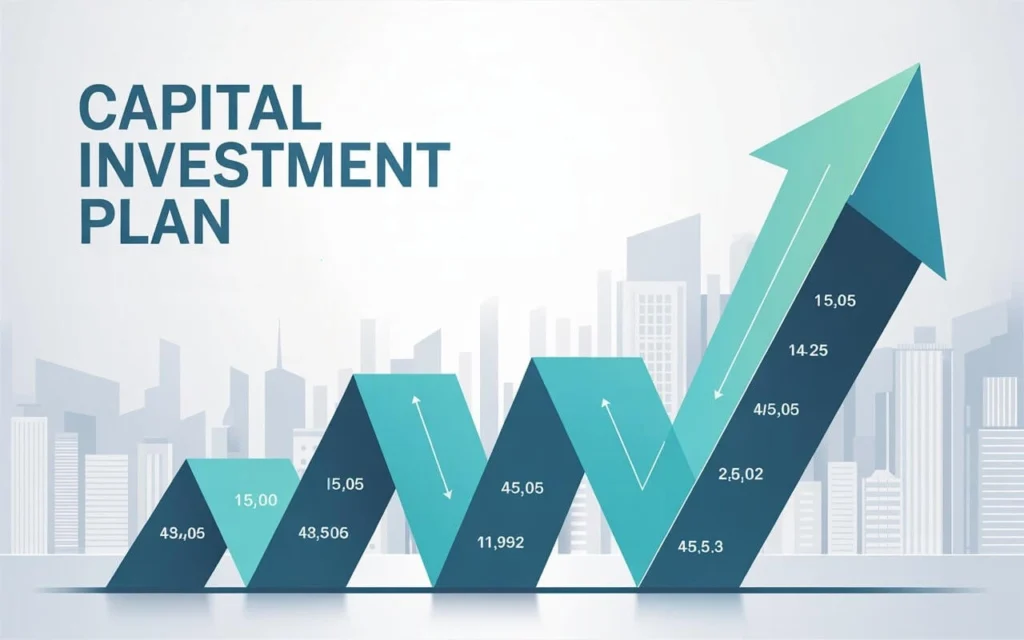In a rapidly evolving financial and operational landscape, many organizations find themselves asking: What exactly is a capital investment plan, and how is it different from capital planning? The terms are often used interchangeably, but in practice, they serve distinct—yet interdependent—roles. Understanding the capital investment plan is essential for making informed, sustainable financial decisions across large-scale operations, especially in sectors like healthcare, education, infrastructure, and government.

Content
Understanding Capital Investment Plan
A capital investment plan outlines the strategy for investing in physical assets that support the organization’s mission, enhance productivity, and ensure long-term growth. These investments typically include:
- New construction or major facility upgrades
- Equipment purchases and modernization
- Energy efficiency or sustainability projects
- Information technology and system infrastructure
- Compliance or safety-related upgrades
For example, a school district may include the construction of a new elementary school, roof replacements across campuses, and upgraded security systems as part of its 10-year capital investment plan. The plan helps stakeholders align priorities, funding sources, and timing to ensure smooth implementation and long-term impact.
Capital Investment Planning vs. Capital Planning
Though often conflated, capital investment planning and capital planning serve different—but complementary—roles:
| Capital Investment Plan | Capital Planning |
| Focused on what to fund and why | Focused on when to fund and how |
| Project- or asset-level strategy | Organizational-level strategy |
| Includes prioritization, costs, and ROI | Includes funding schedules, approvals, and timing |
| Answers: What assets need investment now? | Answers: How do we fund and phase those investments? |
Capital planning provides the umbrella under which capital investment decisions are made. Organizations must synchronize both to ensure strategic allocation of capital and optimal use of limited financial resources.
The Role of Data in Capital Investment Plan
In today’s data-driven world, successful capital investment planning depends on accurate, actionable data. Data insights can help organizations:
- Assess asset condition and criticality
- Forecast future replacement needs
- Evaluate lifecycle costs and ROI
- Justify funding requests to boards or taxpayers
- Prioritize projects objectively
Tools like FOUNDATION.Plans by Intellis allow decision-makers to visualize infrastructure data, run cost analyses, and simulate future investment scenarios. This ensures that capital decisions are backed by reliable data, not guesswork or political pressure.
Best Practices for Effective Capital Investment Planning
To create a reliable and impactful capital investment plan, organizations should follow these strategic best practices:
1. Engage Stakeholders Early
Include input from operations, finance, facilities, IT, and end-users. Collaboration ensures alignment and avoids surprise bottlenecks.
2. Use a Standardized Evaluation Process
Define scoring criteria such as risk level, compliance needs, strategic alignment, and expected return on investment (ROI).
3. Incorporate Lifecycle Thinking
Don’t just look at initial costs—factor in long-term maintenance, operational impact, and eventual replacement timelines.
Case Example: A Municipal Government’s Capital Investment Strategy
A mid-sized city facing deteriorating infrastructure needed a sustainable plan to replace aging water mains, renovate public buildings, and upgrade traffic signals.
With help from capital investment strategy software, the city was able to:
- Assess the age and condition of over 300 assets
- Prioritize investments based on public safety, cost, and environmental impact
- Create a 10-year investment roadmap with clear timelines and funding scenarios
- Engage residents and council with transparent data and ROI insights
The result: optimized infrastructure spending, reduced emergency repairs, and restored public trust.
Improve Capital Investment Planning with the Right Tools
Manual spreadsheets and outdated processes can’t keep up with today’s complex capital needs. Digital platforms like FOUNDATION.Plans by Intellis transform how organizations plan, evaluate, and manage their capital investment portfolios.
Key features include:
Data centralization – One source of truth for asset condition, project scope, and financials
Prioritization algorithms – Automate project ranking based on pre-set criteria
Funding scenario modeling – Evaluate the impact of different budget or grant options
Real-time dashboards – Visualize projects by type, location, urgency, and cost
Collaboration tools – Involve all stakeholders, from facilities to finance, in one platform
With Intellis, organizations can confidently shift from reactive asset management to strategic capital investment planning.
Final Thoughts: The Strategic Value of Capital Investment Plan
An effective capital investment plan is far more than a budget document—it’s a long-term vision backed by data, strategy, and stakeholder alignment. Whether you oversee a school district, hospital network, government agency, or university system, the need to invest wisely in capital assets has never been greater.
When done right, capital investment planning leads to:
- Better use of public or private funds
- Increased transparency and accountability
- Reduced risk of asset failure
- Improved service delivery and operational performance
- Greater stakeholder confidence
Frequently Asked Questions
What is a capital investment plan?
A capital investment plan is a long-term strategy outlining how an organization allocates funds to physical assets like buildings, equipment, and infrastructure.
How is capital investment planning different from capital planning?
Capital investment planning focuses on selecting and evaluating specific projects, while capital planning manages the timing, funding, and phasing of those investments.

A business blog writer at the age of 19, Francis is a jack-of-all trades when it comes to writing. He specializes in content creation for businesses and blogs. With years of experience under his belt, he’s able to provide both written and video content that will engage readers and viewers alike!

